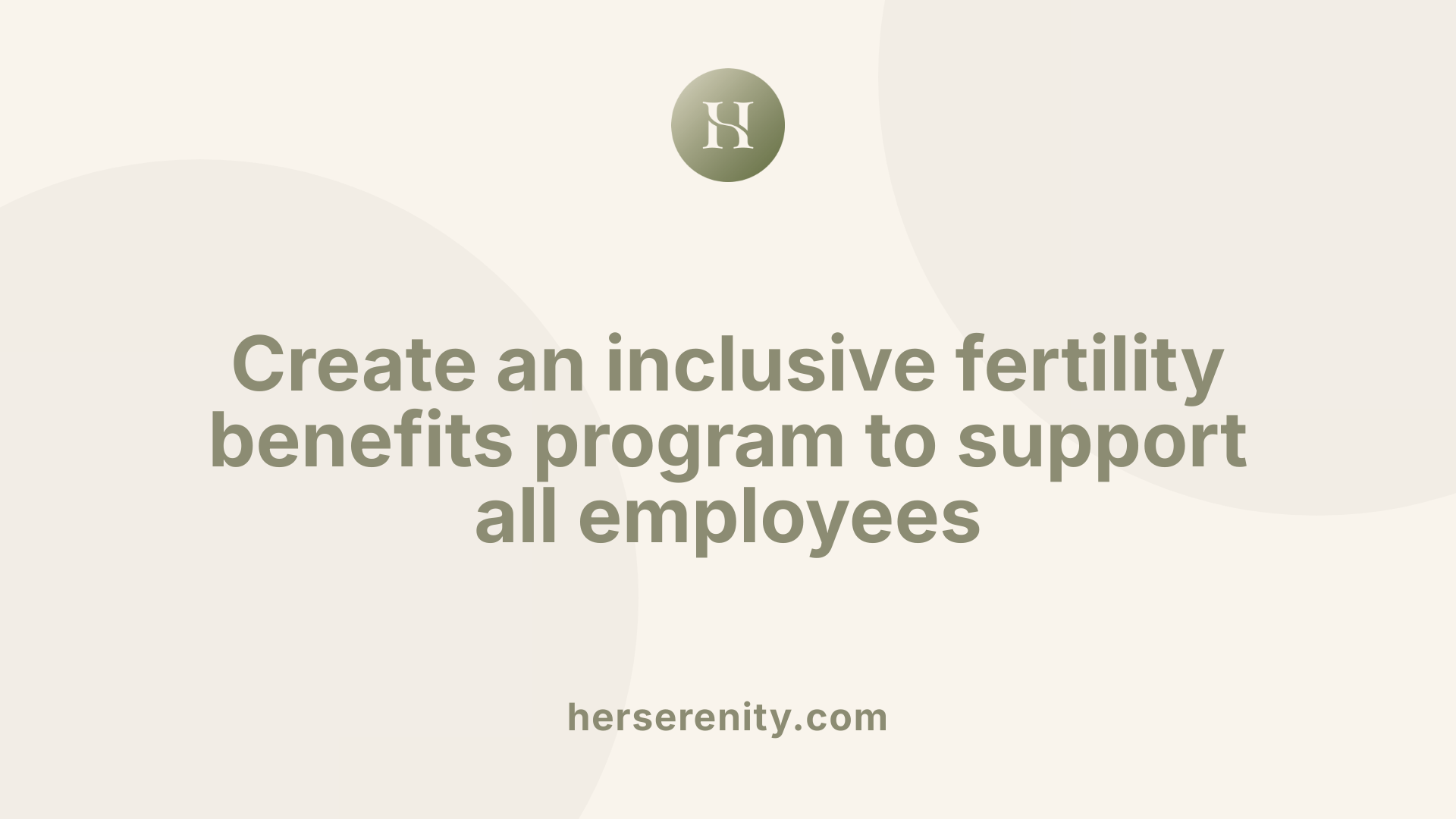How to build your fertility care team
Assembling a Cohesive Fertility Support Network

Building Your Fertility Care Team from the Ground Up
Embarking on a fertility journey requires a knowledgeable, supportive, and coordinated team of professionals. This article explores essential steps to assemble a comprehensive fertility care team, highlighting roles, communication strategies, and supportive resources that enhance your experience and outcomes.
Understanding the Structure of a Fertility Care Team
Roles of fertility professionals and specialists
A fertility care team is composed of various healthcare professionals specializing in different aspects of reproductive health. These include reproductive endocrinologists who diagnose and treat hormonal and ovulation issues, urologists focusing on male fertility, nurses and embryologists managing laboratory procedures, dietitians advising on nutrition, psychologists providing emotional support, and genetic specialists assessing hereditary factors.
Multidisciplinary team composition
Creating a well-rounded team involves assembling these diverse experts to address the complex needs of each patient. Each member has specific responsibilities, such as conducting tests, offering treatment options, providing counseling, or managing medications. Clear roles enable seamless collaboration, ensuring all aspects of fertility—from medical to emotional—are covered.
Importance of team cohesion and communication
Effective communication is vital for the success of a multidisciplinary team (MDT). Implementing systematic tools like SBAR (Situation, Background, Assessment, Recommendation) for clear hand-offs fosters cohesive care. Regular meetings and shared documentation help synchronize efforts, reducing misunderstandings and delays. Building trust and a psychologically safe environment encourages team members to voice concerns and share insights openly.
How to build a structure for a multi-disciplinary fertility care team?
Constructing a successful MDT involves including key professionals such as reproductive endocrinologists, urologists, nurses, embryologists, dietitians, psychologists, and genetic counselors. Defining each role precisely helps prevent overlaps and gaps.
Systematic communication methods like SBAR support consistent information flow during patient hand-offs. Routine team meetings facilitate coordination and continuous learning. Creating a culture where all members feel empowered to speak up enhances collaboration.
This cohesive structure delivers comprehensive, individualized care tailored to the patient’s specific fertility goals, improving outcomes and patient experience.
What are the benefits of an MDT for fertility?
A multidisciplinary approach offers several advantages. Patients gain access to specialized and up-to-date advice across different fertility aspects, leading to better diagnosis and treatment plans.
By reducing confusion and streamlining communication among providers, an MDT enhances safety and treatment efficiency. It also supports the mental and emotional wellbeing of patients by providing an integrated network of support.
Overall, collaborative care increases the likelihood of successful outcomes and elevates patient satisfaction by ensuring that all needs—medical, psychological, and social—are addressed comprehensively.
Initiating Your Journey: Early Steps and Medical Assessment

What are the initial steps to start fertility care?
Starting your fertility journey involves several important first actions. Begin by consulting your OB-GYN or primary care provider. They will review your medical history and may perform initial assessments, such as blood tests and ultrasounds, to evaluate your reproductive health. This initial step helps identify any obvious issues and guides further testing or specialist referral.
Gathering prior medical and fertility treatment records is also essential. Having a complete history allows your healthcare team to understand previous conditions, treatments, and outcomes, enabling more personalized care.
Setting clear family building goals from the beginning is vital. Whether you want to conceive now, preserve fertility for future use, or explore alternative options like adoption, clearly defined goals help shape your treatment plan and the types of specialists you may need to see.
When should one see a fertility specialist?
Women are generally advised to see a reproductive endocrinologist if they have been trying to conceive unsuccessfully for one year, or after six months if they are over age 35. Early consultation is recommended especially if there are known reproductive health issues such as PCOS, endometriosis, or irregular cycles.
Men who suspect fertility problems should also seek evaluation from a urologist specializing in reproductive health. Prompt assessment can lead to timely treatments, improving the chances of conception.
Taking early action, particularly when risk factors are present, helps prevent prolonged delays and maximizes your options for effective treatments.
Selecting and Collaborating with Fertility Professionals
How can someone support a friend or family member going through fertility treatment?
Supporting someone through fertility treatment requires empathy and understanding. Listening carefully to their feelings without judgment helps them feel heard and validated. Recognize that emotional challenges like grief, frustration, or anxiety are common, and offering a compassionate presence can be very meaningful.
Respecting their privacy and wishes is crucial. Educate yourself about their treatment procedures to better understand what they are experiencing. Avoid making insensitive comments or giving unsolicited advice, which can add stress.
Practical support in daily life, such as helping with errands or work commitments, can lessen their burden. Being patient and steadfast during their long and often emotional journey provides stability and reassurance.
What are effective ways to communicate with your fertility care team?
Establishing open and clear communication with your healthcare providers enhances the effectiveness of treatment. Start by expressing your preferred modes of contact—whether via email, phone, or patient portals.
Be proactive in sharing your questions and concerns during appointments or through your preferred communication channels. Don't hesitate to request detailed overviews of your treatment plan and cycle, so you remain well-informed.
It’s helpful to confirm all agreements and decisions in writing, which prevents misunderstandings later. Regular updates and honest feedback about your symptoms, emotions, and treatment progress foster a trusting relationship.
Important considerations in collaboration
Choosing the right specialists — including reproductive endocrinologists, urologists, and supportive healthcare providers — ensures comprehensive care.
Using diagnostic tests effectively, such as bloodwork, ultrasounds, and semen analyses, helps guide personalized treatment planning.
A collaborative team that communicates well and involves you in decision-making creates a supportive environment conducive to achieving your family-building goals.
Organizing Support and Building Emotional Resilience
Maintaining emotional well-being during fertility treatment is crucial for overall health and the success of the journey. One effective way to do this is by joining support groups where you can share experiences and find comfort among others facing similar challenges.
Seeking mental health support, such as therapy or counseling, provides a safe space to express feelings, manage stress, and develop coping strategies. Mindfulness practices like meditation, deep breathing exercises, or yoga can help reduce anxiety and foster emotional stability.
Building a strong support network that includes your partner, friends, family, or even peer groups is vital. Sharing your feelings and concerns with trusted individuals creates a sense of understanding and reduces emotional burdens.
Practical tools can play a significant role in organizing your fertility journey. Using calendars or specialized apps, like Berry, allows you to track medications, appointments, symptoms, and questions. Sharing these updates with your support system not only keeps them involved but also offers reassurance.
Incorporating these strategies helps manage the emotional aspects of fertility treatment effectively, promoting resilience and a positive outlook during what can often be a stressful time.
Financial Planning and Navigating Treatment Costs
 Understanding the financial aspects of fertility treatment is crucial for making informed decisions and reducing stress during your journey. One of the first steps is familiarizing yourself with your insurance benefits and coverage options. Many health plans vary in what they cover, including fertility testing, treatments like IUI or IVF, and related procedures. Knowing what is included can help you plan effectively and avoid unexpected expenses.
Understanding the financial aspects of fertility treatment is crucial for making informed decisions and reducing stress during your journey. One of the first steps is familiarizing yourself with your insurance benefits and coverage options. Many health plans vary in what they cover, including fertility testing, treatments like IUI or IVF, and related procedures. Knowing what is included can help you plan effectively and avoid unexpected expenses.
Researching additional financial resources is equally important. Numerous assistance programs, grants, and sliding-scale payment plans are available through various clinics and nonprofit organizations. These resources aim to make fertility care more accessible by offering financial aid or flexible payment options.
Discussing treatment costs with your healthcare providers early in the process can prevent surprises and help tailor options to your budget and goals. Many clinics now provide detailed treatment overviews and cost estimates, empowering you to make choices aligned with your financial situation.
What resources are available for fertility treatment financing?
| Resource Type | Description | Details |
|---|---|---|
| Insurance Coverage | Many health plans include some fertility services | Coverage can vary; check your plan specifics |
| Fertility Grants & Assistance Programs | Nonprofit and hospital programs that fund treatments | Eligibility criteria apply; research local options |
| Payment Plans | Clinics may offer installments or sliding-scale fees | Ask your clinic about available options |
| Employer Benefits | Some companies offer fertility benefits or support | Inquire with HR about provided coverage |
| External Financial Support | Charities and organizations that provide grants | Search for programs through organizations like RESOLVE |
Being proactive about your financial planning—by understanding your insurance, exploring grants, and discussing costs openly with your providers—can enhance your control over your fertility journey. This approach not only eases financial burden but also enables you to focus more on your treatment and emotional well-being.
Fertility Preservation and Special Considerations
 Women facing cancer or other serious health concerns have several options to preserve their fertility before treatments that may impact reproductive ability. Understanding these options can help patients make informed decisions early in their treatment process.
Women facing cancer or other serious health concerns have several options to preserve their fertility before treatments that may impact reproductive ability. Understanding these options can help patients make informed decisions early in their treatment process.
One of the most common techniques is egg cryopreservation, where mature eggs are collected, frozen, and stored for future use. Embryo freezing, similar but involving fertilization of eggs prior to freezing, offers another pathway, especially if the patient has a partner or prefers to use donor sperm later.
In cases where immediate start of cancer treatment is necessary, ovarian tissue cryopreservation provides an alternative. This procedure involves removing and freezing ovarian tissue, which can later be transplanted back to restore ovarian function.
Additionally, ovarian transposition is a surgical procedure that moves the ovaries out of radiation fields, thereby protecting them from the damaging effects of radiation therapy.
Working closely with specialists such as reproductive endocrinologists, oncologists, and fertility surgeons ensures a personalized approach. These experts coordinate to develop tailored plans that fit within the patient's treatment timeline and future family goals.
Supporting a friend with a cancer diagnosis who is considering fertility preservation involves open discussions and emotional reassurance. Encouraging early consultation with healthcare providers, exploring preservation options together, and respecting their choices can significantly ease their journey.
For women with health concerns beyond cancer, options are similar but tailored to individual medical situations. Collaborating with a dedicated fertility team helps optimize the chances of successful preservation.
| Preservation Technique | Description | Suitable For | Additional Info |
|---|---|---|---|
| Egg Freezing | Freezing mature eggs for future fertilization | Women needing quick treatment or delaying pregnancy | Consider hormone stimulation prior to collection |
| Embryo Freezing | Fertilizing eggs and freezing embryos | Couples or women with partner or donor sperm | Requires sperm at the time of collection |
| Ovarian Tissue Cryopreservation | Freezing ovarian tissue for transplantation | Young women needing urgent treatment | Still considered experimental in some areas |
| Ovarian Transposition | Surgically moving ovaries out of radiation area | Women undergoing pelvic radiation | Enhances ovarian preservation in radiation therapy |
Being proactive and working with a specialized healthcare team can help preserve fertility options suited to individual needs and medical circumstances.
Building a Supportive, Inclusive Fertility Benefits Program
 Implementing a comprehensive fertility benefits program at work offers significant advantages for both employees and organizations. These initiatives improve overall wellbeing, foster a supportive environment, and enhance talent retention by demonstrating a commitment to diversity and inclusion.
Implementing a comprehensive fertility benefits program at work offers significant advantages for both employees and organizations. These initiatives improve overall wellbeing, foster a supportive environment, and enhance talent retention by demonstrating a commitment to diversity and inclusion.
A well-designed fertility program typically includes access to counseling services, flexible scheduling, and educational resources about reproductive health. These supports help employees navigate the emotional and physical challenges of fertility treatment while maintaining their professional responsibilities.
Establishing such programs involves several steps. First, organizations should conduct an audit of existing benefits to identify gaps related to fertility support. Next, they should enhance their coverage to include services like fertility testing, assisted reproductive technologies such as IVF and IUI, and fertility preservation options.
Partnerships with digital health platforms can streamline fertility care, making it more accessible and flexible for employees. Effective communication is crucial—employers must clearly articulate available benefits, eligibility requirements, and how to access services.
Inclusion is vital for the success of these programs. Benefits should be accessible to all employees, regardless of sexual orientation, gender identity, or family structure. This ensures that every individual feels supported and valued.
Promoting awareness through ongoing education, such as lunch-and-learn sessions or informational campaigns, helps foster understanding and reduce stigma around fertility issues.
A sample overview of steps involved:
| Step | Description | Purpose |
|---|---|---|
| Assessment | Evaluate current benefits and identify gaps | Understand where improvements are needed |
| Program Development | Design inclusive and comprehensive benefits | Address diverse needs and promote equity |
| Partnering | Collaborate with digital health tools and specialist providers | Increase access and efficiency |
| Communication | Educate employees about benefits | Ensure awareness and utilization |
| Support & Resources | Offer counseling, support groups, and educational resources | Enhance emotional wellbeing |
By integrating these elements, employers can create a workplace culture that supports family-building journeys, improves morale, and positions the organization as an inclusive leader in employee health and well-being.
Empowering Your Fertility Journey with a Strong Team
Building a comprehensive and collaborative fertility care team is essential to navigating the complex landscape of reproductive health. Through clear communication, emotional support, strategic planning, and inclusive resources, individuals can actively participate in their care and work toward their family-building goals with confidence and resilience.
References
- Taking Control of Your Fertility Care: Empowering Yourself to Be an ...
- How to Be an Empowered & Effective Fertility Patient
- 10 Ways to Take Back Control On Your Fertility Journey
- Teaming in the contemporary fertility clinic: creating a culture to ...
- How to support your employees as they undergo fertility care
- 6 Steps to Get Started on Your Fertility Journey
- Frame Fertility



































































































